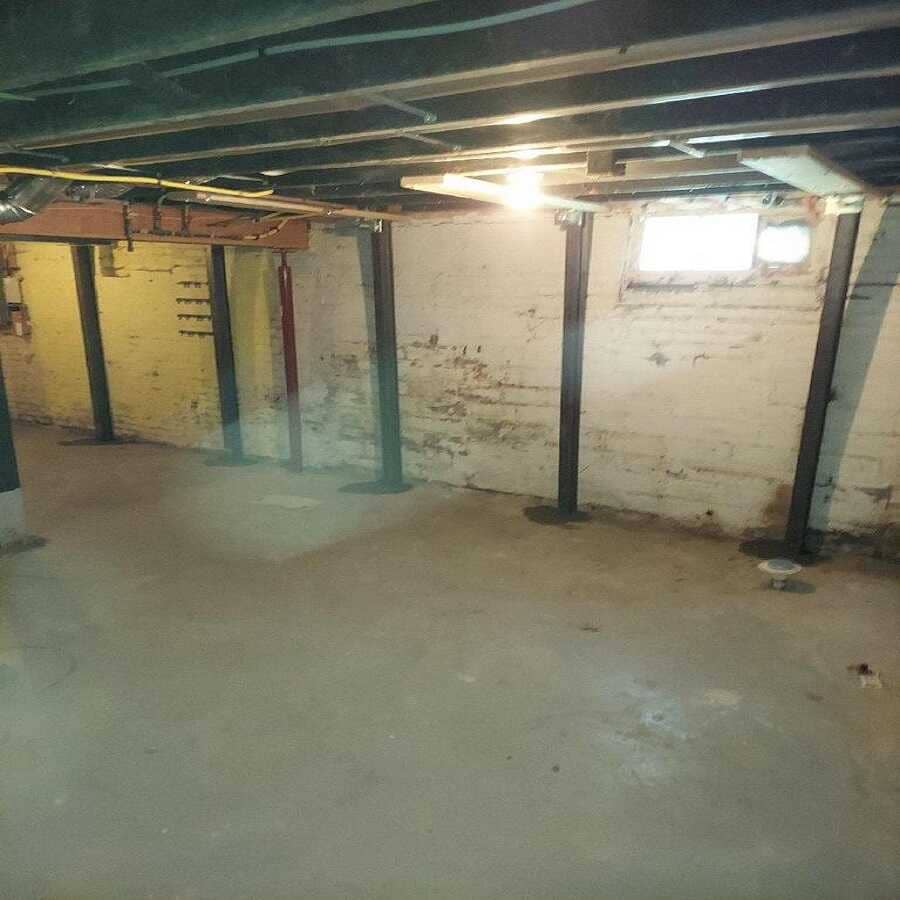The Ultimate Guide To Best Basement Waterproofing
The Ultimate Guide To Best Basement Waterproofing
Blog Article
Best Basement Waterproofing - An Overview
Table of ContentsNot known Details About Best Basement Waterproofing All about Best Basement WaterproofingThe 10-Minute Rule for Best Basement WaterproofingBest Basement Waterproofing Can Be Fun For Everyone8 Simple Techniques For Best Basement Waterproofing
uses excavation strategies toward all-time low of the framework's foundation. includes removing dampness after it has gotten in the basement. AdvantaClean's skilled experts and professionals will locate the water source. If wall surface or piece fractures exist, we will certainly infuse polyurethane and epoxies right into the cracks and secure the compromise, preventing further moisture from going into.Setting up basement air flow systems, conditioning systems, or basement dehumidifier systems to obtain water out of your basement. Selecting AdvantaClean's basement waterproofing services is an effective method to deal with wetness and avoid mold and mildew from compromising the structure of your home and the health of your family.
The Ultimate Guide To Best Basement Waterproofing
You can waterproof just your interior walls, which may fix the issue. Or you can waterproof your outside wall surfaces, which is a much better wager however more expensive. Here's the inside story on the different kinds: These thick finishes are cement-like. Once they dry out, they adhere completely to concrete and masonry walls. Best Basement Waterproofing.
Swirl the brush at the last of application to offer the wall an attractive, completed look. Concrete water-proof finishes can't be used to previously repainted surfaces; examine the label. A 5-gallon bucket costs concerning $60. Understood as densifiers, they are suitable only for wall surfaces that have not been repainted or sealed.
However you brush, roll, or spray it on much even more thickly one gallon covers just 75 square feet, not the 300 square feet regular with typical paint. Water resistant paint is great for DIY application. You can apply it over repainted surfaces, and paint over it once it's healed (one gallon prices $37).
It can set you back $10,000 to $15,000, depending on the work needed. Exterior waterproofing involves digging deep into all around the house to the full depth of the structure walls, then mounting a water resistant covering or membrane topped by drain panels. The panels provide an easy path for water to stream down to an outside French drain at the base of your foundation.
The Best Strategy To Use For Best Basement Waterproofing
We've all been captured in a tornado without any umbrella or raincoat. And it's always a dish for catastrophe: whatever's damp, your hairdo is messed up, and things are obtaining mildewy. A cellar without waterproofing is type of like that. Minus the messed up coiffure part. Your basement doesn't intend to undergo a downpour without correct security equally as long as you don't wish to.
However if you've done your research, you would certainly understand there are 2 kinds of waterproofing: inside and exterior. It can get perplexing what they both mean, which one's a much better financial investment, and what will really maintain the water out. Do not stress, we assembled this blog to easily specify both approaches for you and discuss the pros and disadvantages of each.
Exterior waterproofing is a waterproofing method that includes securing your home from the outside. It's sort of like a moat around a castle. It involves digging a trench around your whole home down to the structure (regarding 8 to 10 feet down). The foundation wall learn the facts here now surfaces are then cleansed, sealed, and covered with a water-proof membrane layer or sealant.
Best Basement Waterproofing Fundamentals Explained
The most significant advantage of exterior waterproofing is that it avoids water from entering your basement in the first place. Unless you have a leaky cleaning device, water usually gets in the basement from the exterior. Groundwater and heavy rains can seep in through the cracks in your foundation, so outside waterproofing can protect against water from entering your home.

Interior cellar waterproofing involves waterproofing from the inside. Any water that leakages right into your basement is rerouted before it touches your floor.
9 Easy Facts About Best Basement Waterproofing Described
It's an efficient technique to waterproof your next cellar. The disadvantage of indoor cellar waterproofing mostly has to do with the installment process.
Finally, outside and indoor cellar waterproofing are both effective techniques of safeguarding your home from water important link damage. Outside waterproofing creates a barrier that prevents water from entering your home, while interior waterproofing reroutes water that does enter your home. And it is very important to note that exterior waterproofing is an expensive and turbulent setup process when compared to indoor waterproofing.
Whichever technique you choose, see to it you choose a trustworthy and credible specialist for the work. Both methods require skilled workers to manage the work. If you have any kind of concerns about cellar waterproofing, please connect to us. And if you're in our service location and have water in your basement, contact us for a totally free, no-obligation home assessment.

Report this page